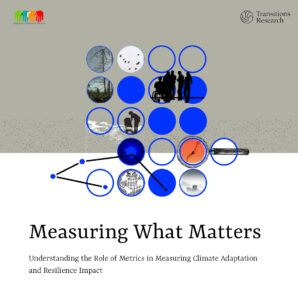The sun beats down on Uma’s weathered face as she looks to the fields around her. It is the year 2040, and Indian agriculture has undergone a radical transformation. Fields now hum, and whir with drones overhead and agribots on the ground. Data-driven algorithms dictate sowing times, fertiliser applications, and predict harvest with uncanny accuracy. Yet, amidst the promise of economic prosperity and growing yields, a disquieting question emerges: what are the hidden costs of this AI-powered revolution, particularly for those who till the land?
In order to address the question, this blog post dives into two speculative fiction case-studies of AI use in Indian agriculture. By extrapolating from current trends, levels of AI implementation, and key sectoral characteristics of agriculture in India, these narratives act as laboratories of the imagination – disrupting dominant narratives, and challenging assumptions about technological rationality, and promise. In the context of emerging technologies like AI, where trajectories are unpredictable and social dimensions uncertain, speculative fiction methods provide an opportunity to inhabit future worlds, and delve into the lived experiences of those who stand to be the most affected. Rather than foretell the future, these narratives aim to spark critical dailogue and reflection about the assumptions, choices and, values shaping our current technological trajectories.
Let us delve into the fictional worlds of Uma and Pravesh, two Indian farmers whose lives have been shaped by AI in agriculture.
It’s 2040: Where have all the women in agriculture gone?
Like many of her peers, Uma had dropped out of school at a young age, and began working on the family’s farm. Limited female literacy in her region meant that Uma had been taught at a young age that her future lay in working the fields and helping out her family farm their meagre 2 hectare of land, dedicated to cultivating chillies and other minor produce. Later, when she was married, she continued working in her husband’s farm in the Rayalaseema area of Andhra Pradesh, growing rice, chillies and groundnuts. As the years rolled by, Uma continued to work seasonally as a farm hand, and when she was not working in the fields, she worked at a local restaurant, cleaning utensils and at home, she looked after her children.
However, new changes had begun to take place in Uma’s life. The government of Andhra Pradesh launched a full scale implementation of precision agriculture initiatives that were being tested out in smaller districts and villages. For instance, the government had signed multiple MoUs with big companies, to test out AI driven farm advisories for crop planting times, weather updates and soil conditions. The state’s embrace of AI and precision agriculture practices, ushered in a new era of technology-driven farming.
These changes initially seemed positive to Uma, who had watched from the sidelines, as her husband and other men in the village met a data enumerator who came to discuss the benefits of these technologies.
Initial profits from the timely farming advisories received by her husband, began to bring some financial upliftment to Uma’s family and village. Her husband was now able to take out new loans to invest in other forms of farm mechanisation, and buy agribots that helped with removing weeds, spraying insecticides and harvesting.
Many of these machines were fully automated, and the ones that required human assistance were manually difficult to operate for Uma. As more and more of these machines were brought into the fields, Uma and several other women in the village began to find that they had less of a role in the farms. But, because buying new machinery meant that their families incurred substantial levels of debt, Uma had no choice other than to find alternative employment.
However, this was easier said than done. With limited resources, poor access to education and digital literacy, finding alternative employment was not easy for her. Eventually, Uma and other women in her village began to move out to look for work in small adjacent towns. These towns/cities had rapidly urbanised. In hopes that urban centres would have job opportunities, Uma migrated to a nearby town, but only found employment in the informal sector, working odd jobs. There she toiled from morning to night, but the cost of living in a city itself ate into her earnings, and what little she saved up had to be sent home to her husband to meet his debt obligations.
Uma’s narrative is a stark reminder of the gendered dimensions of technological change. It is not a singular story, but has the potential to reflect the lived realities of many women in India, in the era of AI and precision agriculture. Despite constituting the backbone of the agricultural workforce, with up to 80% of all economically active women in India employed in the sector, female agency remains constrained by stark gender disparities. While women contribute significantly to agricultural labour, land ownership primarily resides with men, with a mere estimated 14% land ownership held by women. This gendered ownership gap, compounded by limited access to financial resources and digital literacy, creates a situation where technological advancements in agriculture, like AI-driven precision farming practices, carry a significant risk of exacerbating existing inequities. If rapid tech adoption proceeds without robust social safety nets, specifically designed for rural women, it could further marginalize them, pushing them out of the sector, and potentially widening the already pervasive gender gap in Indian agriculture. Therefore, fostering inclusive technological transitions in agriculture necessitates not only addressing the practical barriers of access and literacy, but also dismantling the structural and cultural obstacles that limit women’s agency within the agricultural ecosystem.
In Part 2, we delve deeper into the challenges and opportunities posed by AI in Indian agriculture, exploring the narrative of Pravesh, a smallholder farmer grappling with the complex trade-offs and dependencies woven into the promise of technological progress. Stay tuned!




